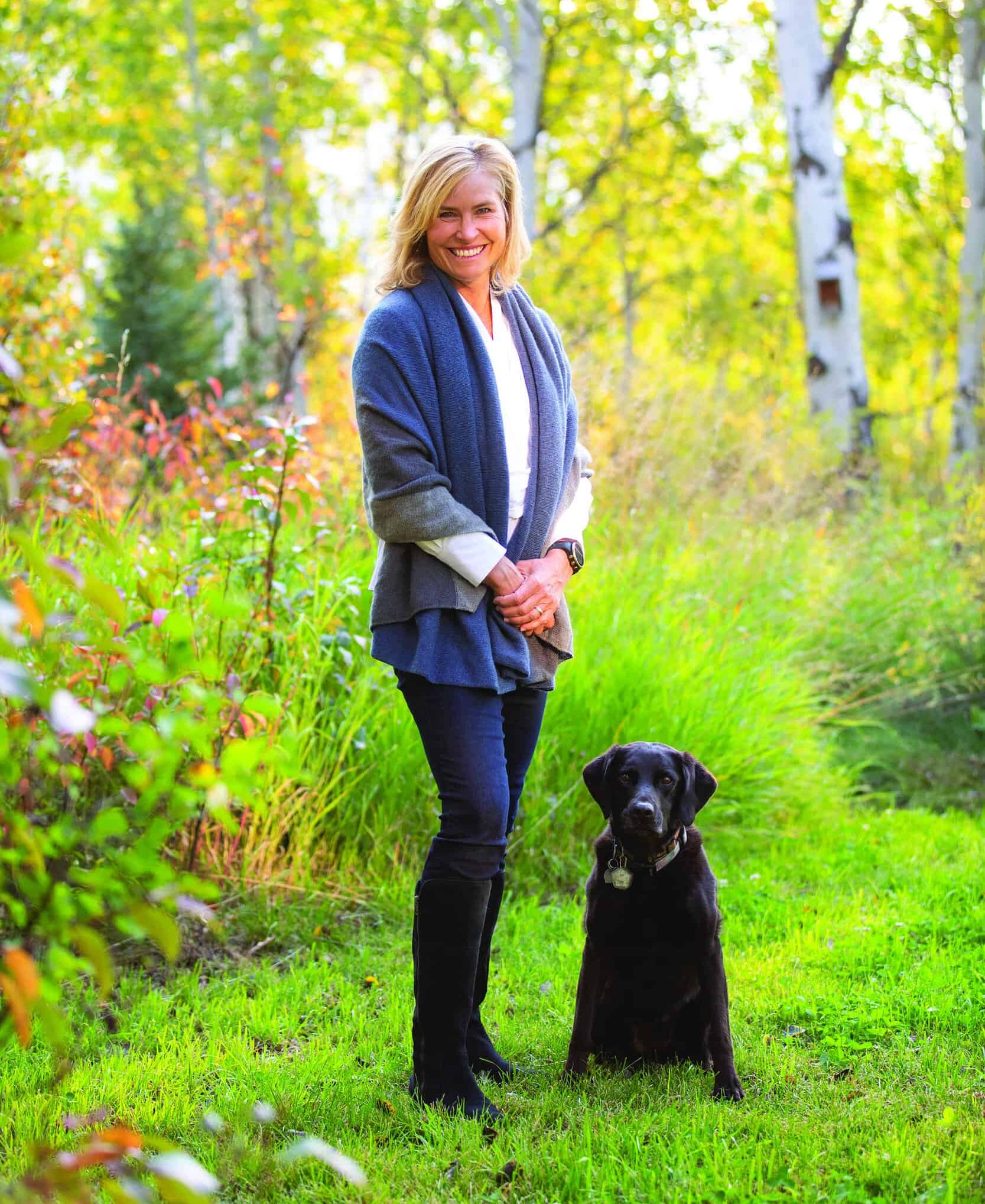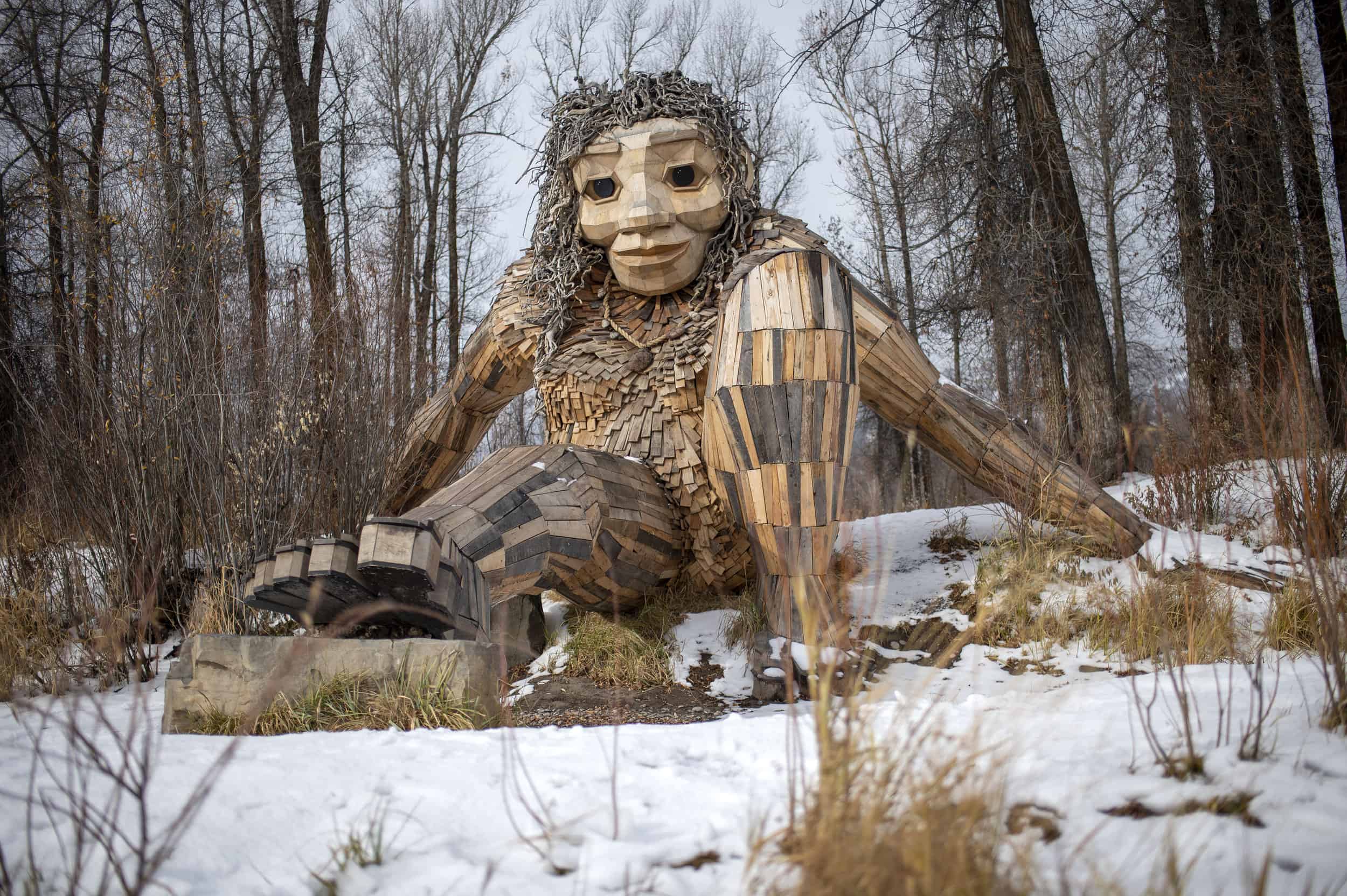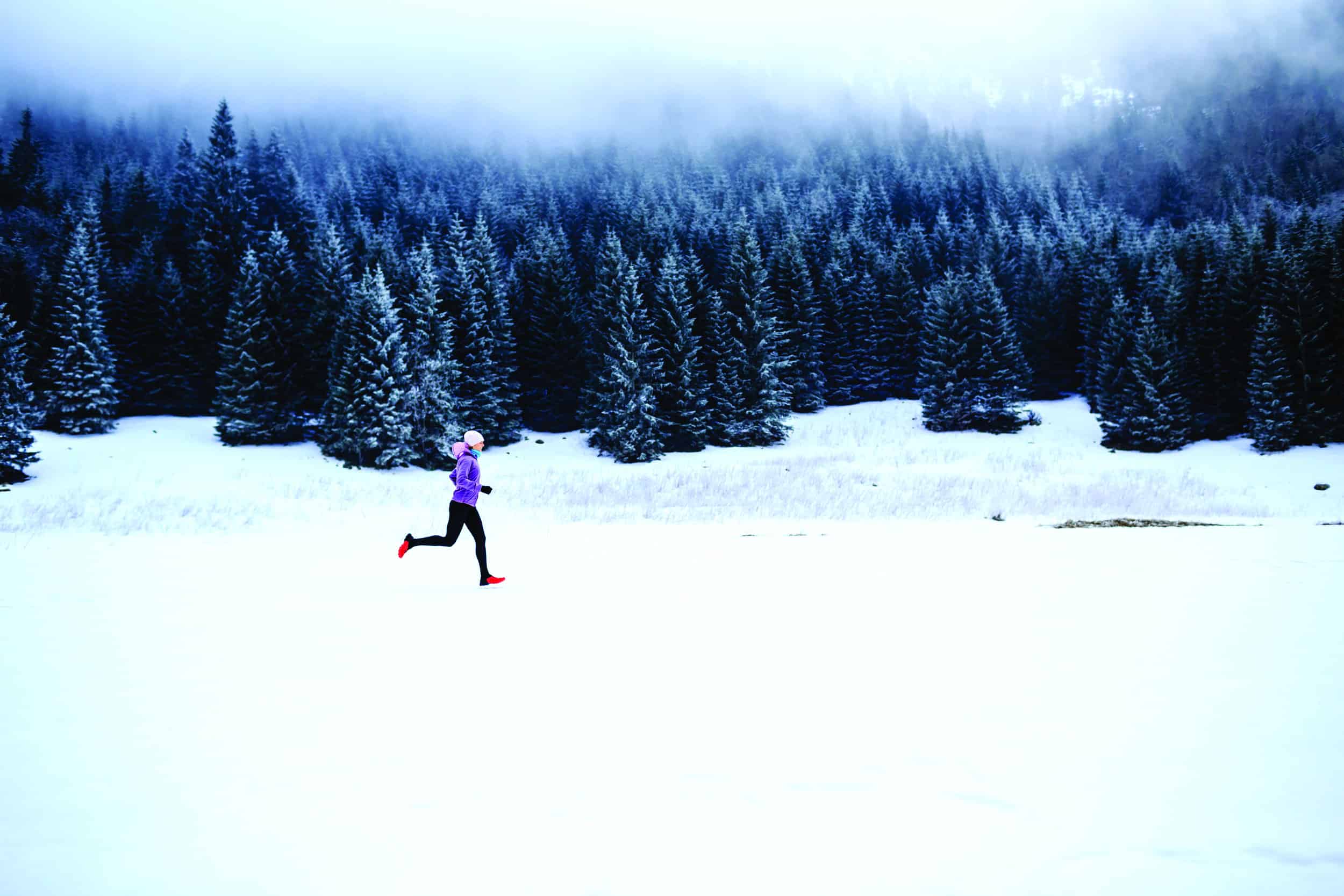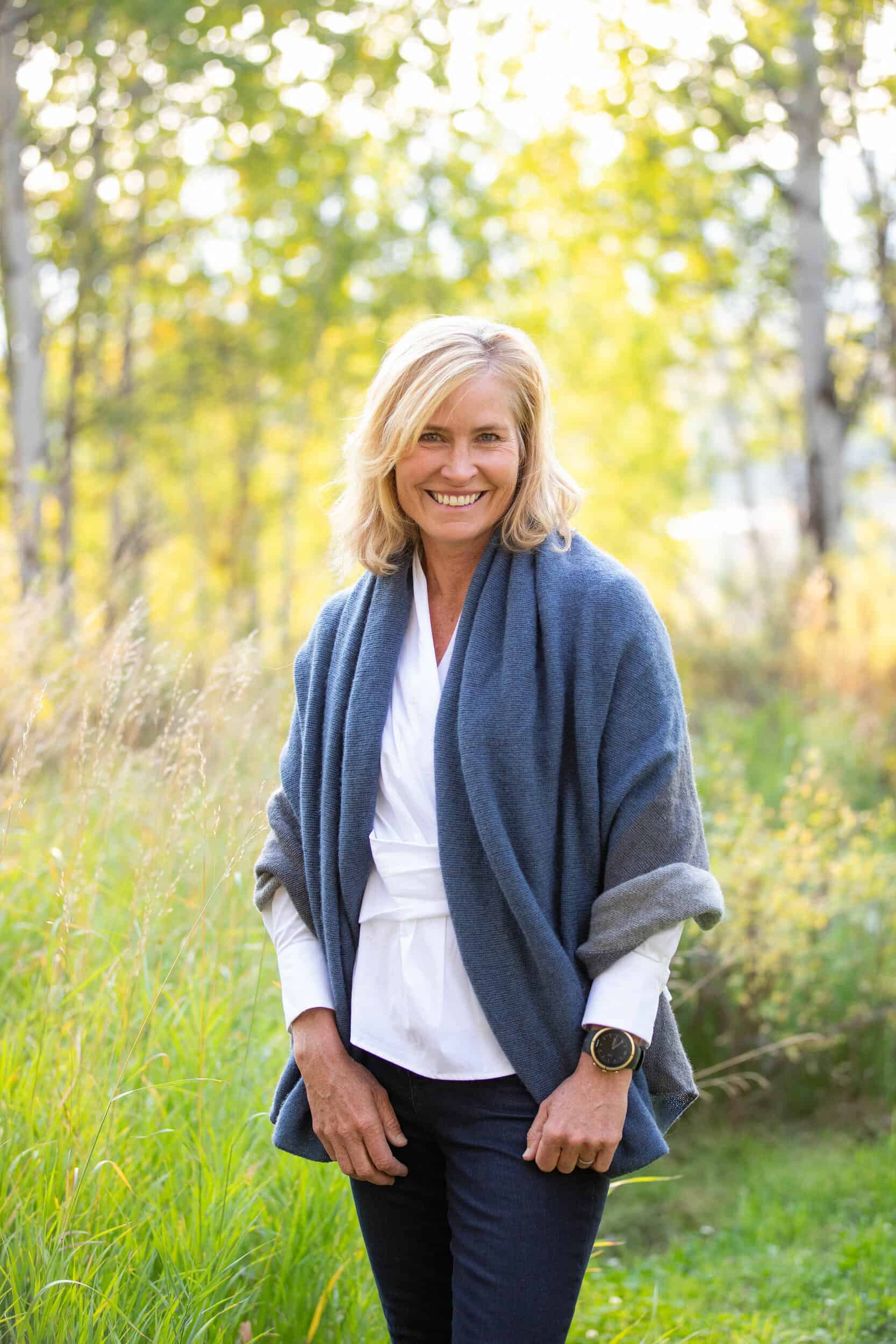Read The
Current Issue
Laurie Andrews
This community leader runs trails and nonprofits.
//By maggie theodora

Laurie Andrews first visited Jackson Hole in the summer of 2001. A rock climber, she and three friends came here to climb the Grand Teton. She says she loved the climb, but that it wasn’t the highlight of the trip. Before returning home, the group checked out Jackson. “It was a Saturday morning, and the farmer’s market was going on,” says Andrews, who, at the time, worked for The Nature Conservancy in Seattle. “I looked around and was like, ‘How does someone live here?’ The Grand was fun, but the community I saw at the farmer’s market was incredible.”
The following winter, on a ledge in the middle of a climb in New Zealand, Andrews decided she wanted to do something different with her life, like move to Jackson. Serendipitously, around that time, a job opened in The Nature Conservancy’s Jackson office. That June, less than a year after she had stood on the Grand’s 13,775-foot-tall summit, she moved to the valley. In the 20 years since, Andrews’s main sport has changed from climbing to running, which she often does with one or more of the four dogs she and husband, Perk Perkins, have. And, through her work at two area nonprofits, she has become an important part of the Jackson Hole community that she initially found so incredible.
“Jackson Hole gives me the ability to have a wonderful career and interact with a wonderful community and also has the space I need for my mental health.”
After landing in Jackson, Andrews worked for The Nature Conservancy for two years and then moved on to work for the Jackson Hole Land Trust. During her 15 years at the Land Trust, a nonprofit that works to protect and steward the landscapes of northwest Wyoming, Andrews helped permanently preserve nearly 8,000 acres, including two acres in downtown Jackson, the preservation of which received donations from more than 5,500 locals (the Save the Block campaign), and R Park, a nonprofit park on the West Bank of the Snake River (see sidebar). In 2019 Andrews moved from the Land Trust to work as president of the Community Foundation of Jackson Hole, a nonprofit that provides philanthropic leadership for the valley and whose annual collaborative fundraiser, Old Bill’s Fun Run, has raised over $200 million for local nonprofits since its founding in 1997. “I came here for the place and the community and still pinch myself that after a day at work, I can go and run up Cache Creek or go for a hike,” she says.
We got Laurie to share some of herself and what she loves about Jackson Hole.
One of the themes throughout my career, and life, is the balance of patience and persistence. I’ve never given a Ted or TedX talk, but I enjoy listening to them [see sidebar about Andrews’s favorite podcasts]. If I did do one, I think the subject would be this balance. I believe that, whether you’re climbing or running or organizing a campaign to save a property, you need to be patient, but also very persistent. There’s a juxtaposition of nudging things along, but, at other times, knowing to step back. People will come along when they’re ready. [Editor’s note—Andrews and her husband knew each other for eight years before they started dating.]
If I didn’t do patience and persistence, another thing I’d love to speak about is the power of community, which my career has really allowed me to experience. There is so much power in this community. I think about the Save the Block campaign, which had so many moving parts and was right up there with the stupidest things I ever agreed to do. But it was successful because the community came together—to agree that this space was a place that mattered to us and then, even though we didn’t have a single donor at the start, to raise more than $7 million in about five months. That was in 2019. And we pulled together during Covid, too.
We created a soft landing for each other. It wasn’t perfect, but we figured out how to help people stay in their homes, and we helped feed students when schools closed. What I picked up at the farmer’s market when I was visiting was real and runs so deep here.
As much as I love this community though, and something that often baffles people, is that I’m an introvert off the charts! I get overstimulated and have to recharge with alone time. Jackson Hole gives me the ability to have a wonderful career and interact with a wonderful community and also has the space I need for my mental health.

R Park
The only nonprofit park in Jackson Hole, Rendezvous Park—R Park—is 40 acres on the west bank of the Snake River near the intersection of Wyoming Highways 390 and 22. The park, part of which is a reclaimed gravel pit, is owned and operated by the Jackson Hole Land Trust. Opened to the public in 2014, the park includes meadows, ponds in which kids can fish and all ages can practice their kayak rolls, hills for winter sledding, wetlands, and Mama Mimi, a giant troll made from repurposed pallets and driftwood collected along the Snake River by Danish artist Thomas Dambo. Mama Mimi is interactive; you can walk on top of her extended leg to cross a creek. R Park is free to visit and open daily from sunrise to sunset. Dogs must be kept on leash and are only permitted on the marked loop trail along the park’s perimeter. Dogs are not permitted in the interior of the park.
Listen Up
“Podcasts are a new experience for me since Covid,” Andrews says. “They give me the feeling that I’m getting a window into the world.” Here are three of her favorites.
The weekly NPR podcast Throughline speaks to history and how a piece of it affects the present, and you never know whether it will be about Afghanistan or something like the history of the game of Monopoly. Often I’ll look at the title and be like, “really?” I’ll give it 10 minutes, and by then, I’ll be fascinated. I didn’t think I cared about Monopoly, but it turns out I do. The game was invented by a woman, and that’s just one interesting thing about it.
A new episode of the Ted Radio Hour comes out Friday morning. Each episode usually highlights three or four different-but-related Ted Talks. I’d never know to look at the Ted Talks featured, but they end up being mind expanding and sometimes bring me moments of pure joy.
Brené Brown’s Dare to Lead features leaders speaking to strategic needs of organizations and teams, especially in these last two years where there has been no playbook. It’s a great list of the best-in-class for work and life lessons. I listen to Brown’s Unlocking Us when I am more in an exploratory mood; it can surprise me, and I get aha moments from it, and I love how it always starts with the person sharing their story—we all have a story, and it is such a good reminder to ask!

Winter Running
“Running in the winter is such a different exercise than running at other times of the year, and it just makes me so happy,” says Andrews, who makes her own winter-specific running shoes by attaching cleats meant for the soles of fishing shoes and waders to a newish pair of regular running shoes. “Fishing cleats aren’t actual spikes, but are instead hexagons,” she says. “So they grab but aren’t as deep as spikes.” (If you’re not up for making your own cleated running shoes, companies like Icebug make running shoes with deep lugs and studs for running on snow and ice.) Three of Andrews’s favorite winter runs are roads in summer, but in the winter “they are a wonderland,” she says.
“Drive as far as you can on the Gros Ventre Road and eventually you’ll hit a gate that closes it to cars. Start running here and go for as long as you want. It is peaceful and quiet.”
“I run the road to Granite Hot Springs before 11 a.m. because after that it’s often busy with snowmobiles. Sometimes I’ll run the entire 11 miles [each way] to the hot springs [making a 22-mile total run].”
“The road up Mosquito Creek is also closed to cars by a gate in the winter. Snowmobilers and fat bikers use it past that and pack it down nicely for running.” JH





